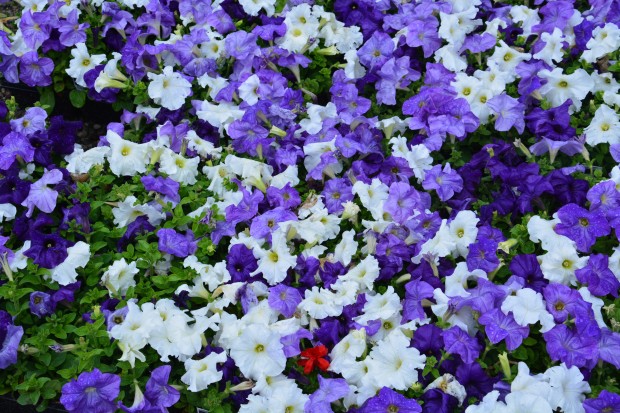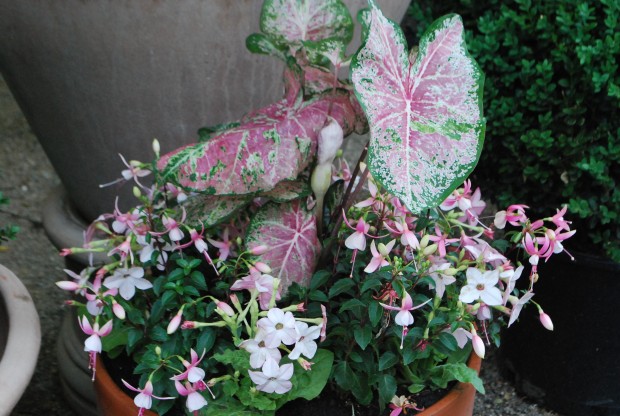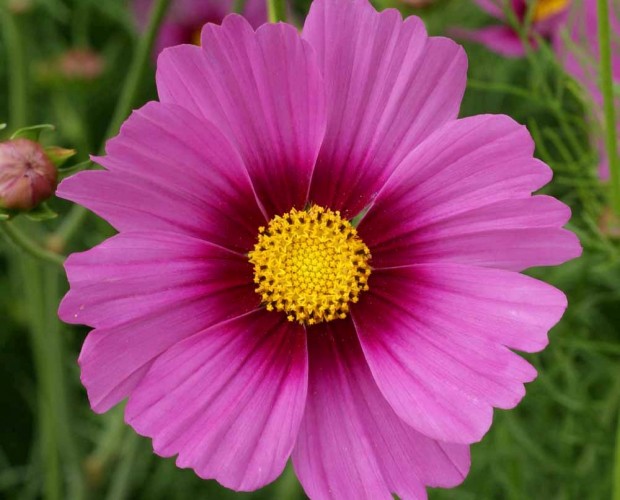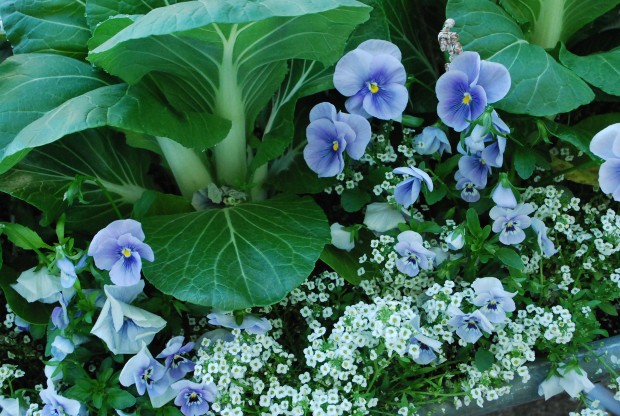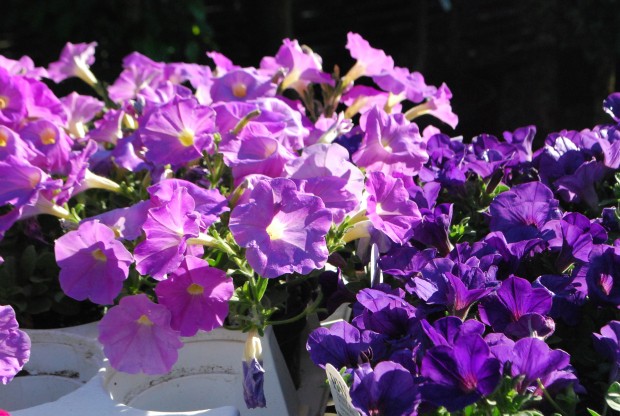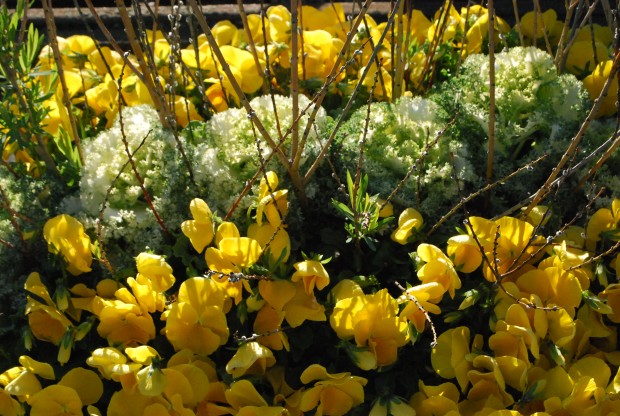
In early June, I published an essay about the garden to come in the front yard of Detroit Garden Works called “Color Scheming”. A dahlia named cafe au lait I had read about on Gardenista had gotten my attention. It did not take long for me to decide to organize and design the entire garden around that coffee infused with cream colored dahlia. My grower managed to obtain and grow on 30 of them for me.
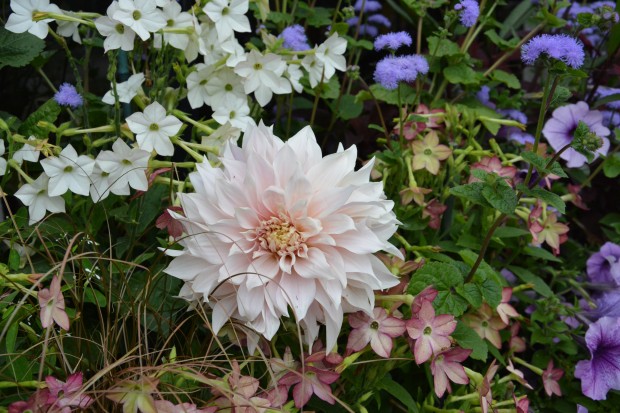 The dahlias got planted in the big garden beds in front of the shop, along with a white dinnerplate dahlia, white and lime nicotiana, and lots of purple and bicolor angelonia. The window boxes were planted with lots of different flowers that I imagined would feature the color and form of that extraordinary dahlia.
The dahlias got planted in the big garden beds in front of the shop, along with a white dinnerplate dahlia, white and lime nicotiana, and lots of purple and bicolor angelonia. The window boxes were planted with lots of different flowers that I imagined would feature the color and form of that extraordinary dahlia.  The first cafe au lait bloomed today. The color is everything I had imagined-smoky, creamy, a beige based utterly pale pink . I cut that stem, and set it in lots of different places in the window boxes – just to see how and if the colors I had chosen for those boxes would compliment a dahlia that I had never seen before. The following ridiculously large number of pictures is a sign of how pleased I was.
The first cafe au lait bloomed today. The color is everything I had imagined-smoky, creamy, a beige based utterly pale pink . I cut that stem, and set it in lots of different places in the window boxes – just to see how and if the colors I had chosen for those boxes would compliment a dahlia that I had never seen before. The following ridiculously large number of pictures is a sign of how pleased I was.
 The coffee and white dahlias are just coming on now-there are buds showing all over the big in ground planting. As I have said before, any response to color is a highly individual and emotional response. I am delighted with what I am seeing. The excitement over the coming of the dahlias is one of many reasons why I enjoy gardening. Some days, everything going on in the garden is all good.
The coffee and white dahlias are just coming on now-there are buds showing all over the big in ground planting. As I have said before, any response to color is a highly individual and emotional response. I am delighted with what I am seeing. The excitement over the coming of the dahlias is one of many reasons why I enjoy gardening. Some days, everything going on in the garden is all good.



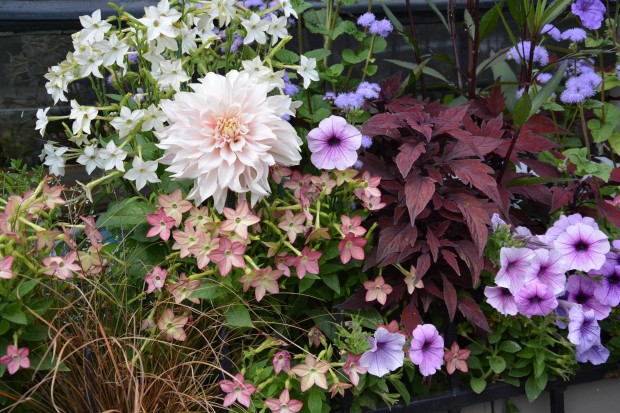






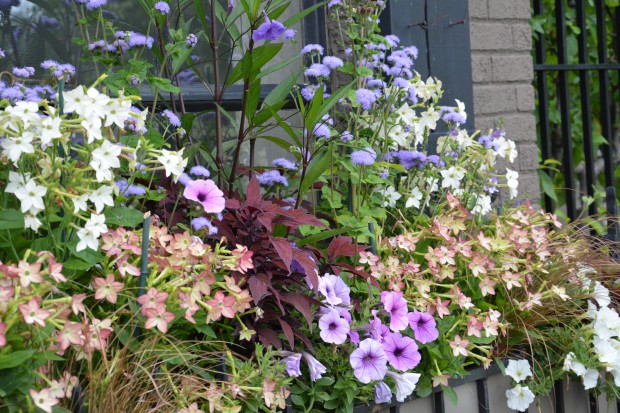




 Last year’s scheme was all green. I planted panicum grass inside the boxwood. More than a few customers said it looked like we were going out of business, as we had not cut the grass. Like I say, everyone has a different idea of beautiful. I knew I wanted to do something with purple. The color of this ageratum artist is so luscious. It is a light blue/purple that I call heliotrope blue. Lots of blue with a big dose of lavender. Dark purple has a way of turning dull, if it does not have lively companions. The blue salvia mystic spires has gorgeous blue/purple flowers that are so striking up close. Plant it in a garden, and the color sinks into the background. In the mid and background of this picture, you can barely make out the purple angelonia.
Last year’s scheme was all green. I planted panicum grass inside the boxwood. More than a few customers said it looked like we were going out of business, as we had not cut the grass. Like I say, everyone has a different idea of beautiful. I knew I wanted to do something with purple. The color of this ageratum artist is so luscious. It is a light blue/purple that I call heliotrope blue. Lots of blue with a big dose of lavender. Dark purple has a way of turning dull, if it does not have lively companions. The blue salvia mystic spires has gorgeous blue/purple flowers that are so striking up close. Plant it in a garden, and the color sinks into the background. In the mid and background of this picture, you can barely make out the purple angelonia.
